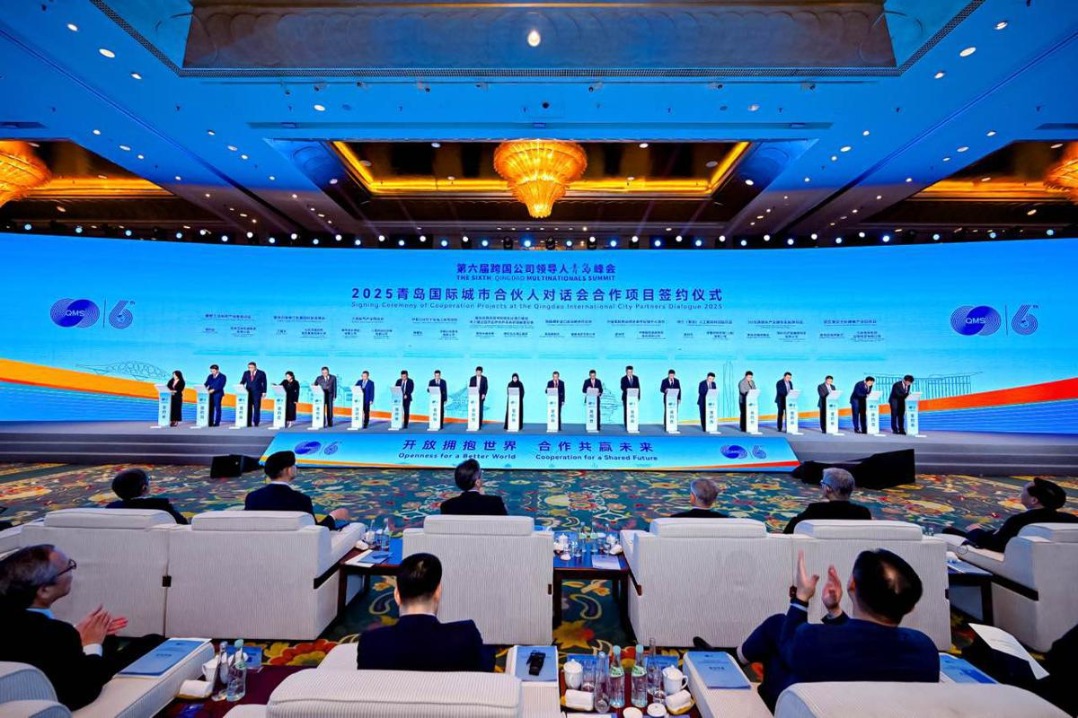Innovative economy also a trade opportunity


The role of innovation has become exceptionally critical in increasing comparative advantages of a country in global production. This is particularly true for China, which is undergoing an economic transformation. This transformation, and the vitality of innovation in determining comparative advantages, will determine the future nature of China's trade with many of its trade partners.
For China, the emphasis on new productive forces is partly being driven by the remarkable speed of the country's demographic transformation. This can be understood by taking a close look at China's population growth and its demographic changes.
China will no longer be the most populous country in the world. As birth rates drop well below death rates, China has negative population growth this year and the trend may continue in the years to come. As a result, the overall population of China will steadily decline during the following decades.
This demographic transformation will have a significant impact on China's industrial strategy. Since the launch of reform and opening-up in 1978, China had been using its large population to develop strong comparative advantages in industrial production that required extensive use of low and semi-skilled workers.
The comparative advantages China enjoyed in industrial production made the country a global manufacturing hub. Investors from developed economies, notably the United States and European countries, shifted their labor-intensive production units of their supply chains to China to take advantage of its cheap labor. This resulted in China becoming a global manufacturing powerhouse in production of chemicals, electronics, garments, machinery, fertilizers, drugs, cars and several other products.
This strategy is not useful for China anymore. One of the implications of China's demographic transformation is the decline in supply of cheap low-skilled labor. Indeed, over the past decade, there has been a steady decline in the number of working-age people in China. In fact China has been slowly adjusting its earlier strategy of specializing in labor-intensive industrial products and moving up in the global value chains.
Instead of cheap labor, it now needs to use technological innovation for maintaining its position as a global industrial power. This makes it imperative for China to focus on innovation in all aspects of its industrial production, beginning from design and conceptualization to making of the products and their marketing. This strategy will become an important factor in China's economic relationships, including those with trade partners.
The Chinese economy has not only undergone a demographic transformation in terms of an absolute reduction in population and declining working-age population. It has also transformed remarkably in terms of consumer behavior. An important point to note in this regard is the very large number of smartphone users that China now has.
Chinese consumers have been fast in adopting digital practices and online shopping habits. With over 122 phones for every 100 Chinese by the end of 2023, China has become a leading e-commerce and online retail business power. As a result of such growth, digital trade, that is, online purchase of goods and services by households and businesses has become an extremely important part of overall trade. In fact, ordering goods and services through mobile payment platforms will only further increase, leading to similar increase in digital trade. This is a factor that will impact China's trade with its trade partners.
China's trade is expected to increase more with trade partners with whom it can engage relatively easily in digital trade. This means foreign businesses can integrate more easily with China's online retail platforms.
Also, China's online consumers have got used to a rich and varied shopping experience.
By scanning QR codes for products, Chinese consumers know practically all details about those products, including from where they have been sourced and their environmental specifications. China's trade partners, therefore, will have to provide similarly enriching experiences when they look to access China's vast market.
The author is a senior research fellow and research lead (trade and economics) at the Institute of South Asian Studies at the National University of Singapore.
The views don't necessarily reflect those of China Daily.



































